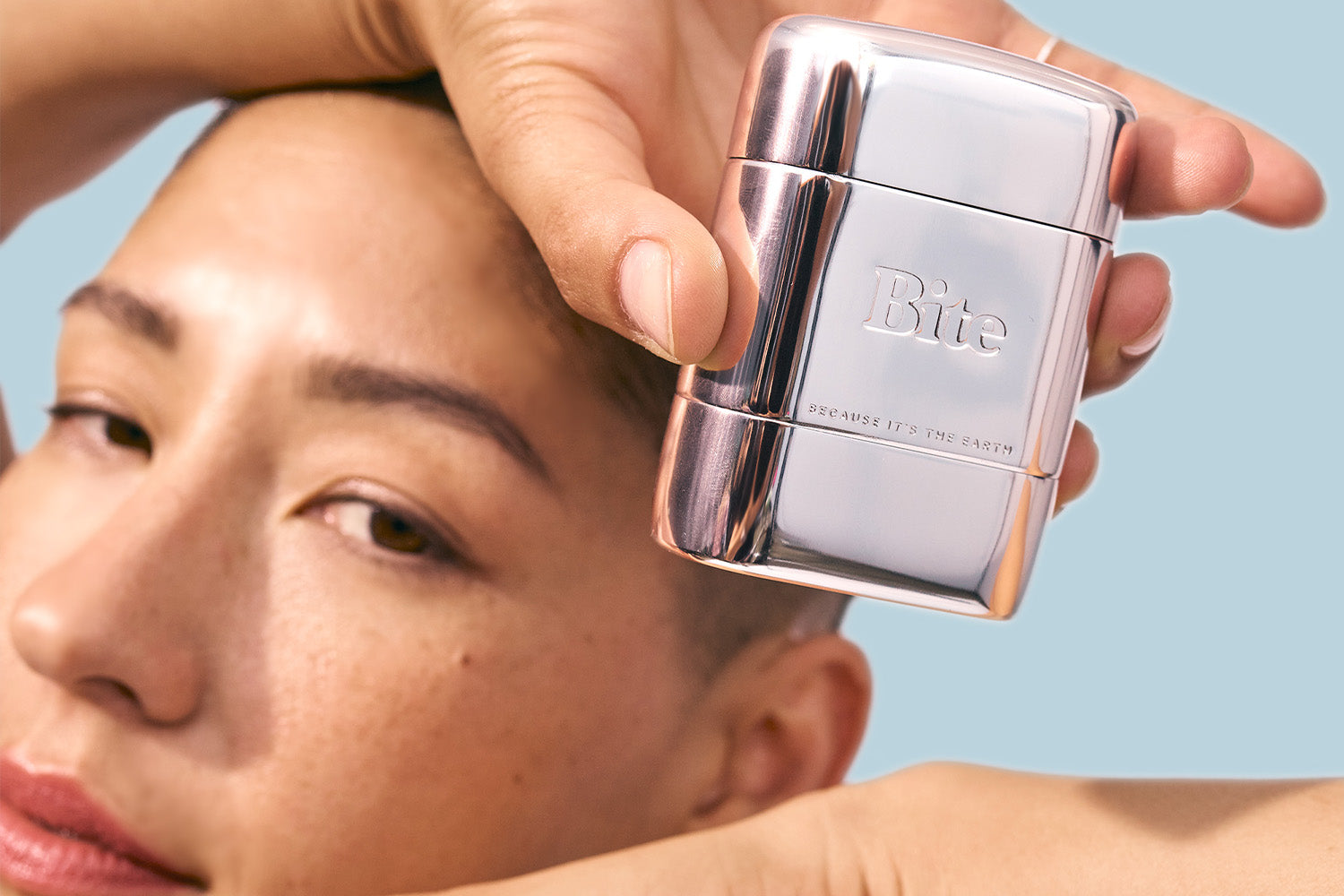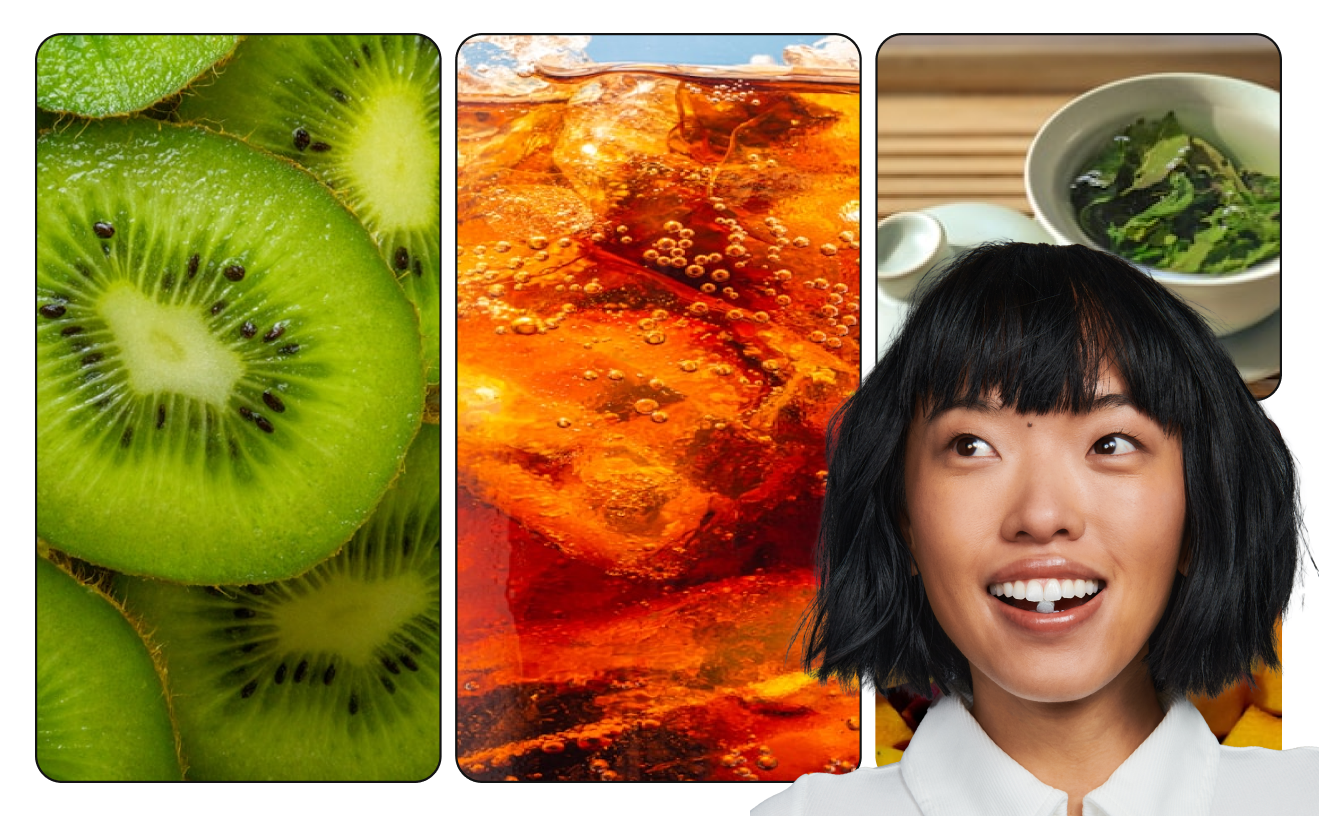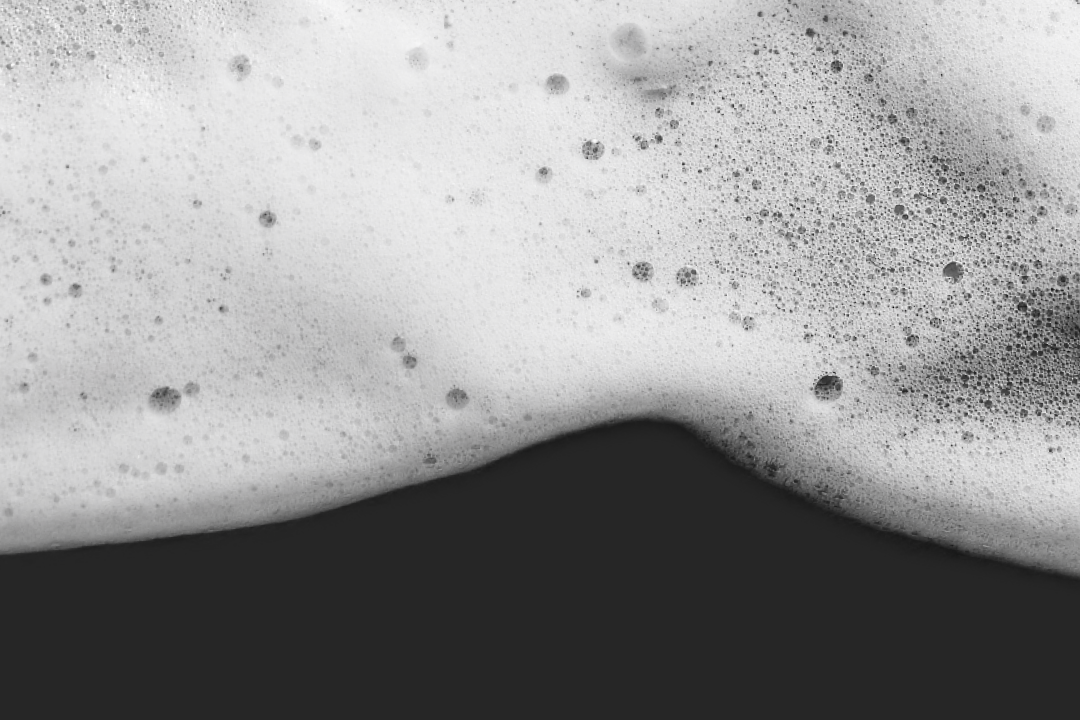Clean Beauty: A Beginner's Guide for 2022
If you’re looking to up your wellness game and find products that are good for you and for the environment: (1.) That’s amazing! We are so happy you are here and seeking out ways to best care for yourself and your planet. And (2.) You’ve probably stumbled upon the term clean beauty.
While the idea of clean beauty is promising when creating a more sustainable and beneficial practice, it can also be a little confusing.
After all, you may be wondering, what exactly is clean beauty? How can I know if an ingredient in my hair care or skincare product really is clean? Are there benefits to seeking clean ingredients, or is this greenwashing all over again?
The good news is that looking for truly clean products can benefit you and the environment–you just need to know what to look for.
And that is why we at Bite created this beginner's guide to help you get started in navigating clean beauty.
Sit back, and let’s dive in!
What Is Clean Beauty?
The first thing to know about clean beauty is this: there is no standard definition.
While we are seeing the term clean beauty crop up more and more on labels and product descriptions in the wellness and beauty industries, the term is not regulated by the FDA.
Typically, companies in the wellness and beauty industry will identify as clean brands to let consumers know that their product relies on natural, safe, or environmentally friendly ingredients.
But, with no standard definition and little regulation, companies can self-define, and there is quite a bit of wiggle room when it comes to what is considered “clean.”
Frustrating? We know.
But! That doesn’t mean you need to give up on finding products you can feel good about.
Whether you’re seeking a moisturizer, eye cream, mascara, sunscreen, or deodorant, there are clean beauty options that can benefit your skin and the planet.
And while it may take a little more digging to uncover what a company really means when they talk about clean beauty, once you know more about what to look for, you’ll be able to interpret ingredient lists and clean beauty claims with ease.
Why Is Clean Beauty Important?
The term “clean beauty” currently casts a wide net, so let's take a step back before getting too caught up in all of the potentially varying definitions.
At its core, we believe the clean beauty movement is all about uplifting ingredients for our skin, bodies, and planet.
This is so important because the products we use every day, even in small amounts, can have a big impact — in both good and bad ways.
For instance, many ingredients historically used in products that sit on the skin all day have been linked to adverse health effects, such as talc and formaldehyde.
Certain ingredients can affect natural ecosystems or emit toxic pollutants based on how it is sourced, manufactured, and discarded.
The personal care and beauty industry is also responsible for producing 120 billion units of packaging per year, making up a substantial amount of the approximately 300 million tons of plastic waste generated worldwide each year. Yikes.
We know this can feel overwhelming. But remember, even small changes add up to make a big difference. When companies hold themselves to high standards regarding the ingredients and packaging they use and consumers know what to look for when pivoting towards truly clean and sustainable beauty, we’ll see progress in action.
And of course, it’s important to remember that you don’t have to be perfect. This stuff is tricky, and especially if you are just getting started, taking small steps to learn more about the effect of different ingredients to help you decide what you want in your personal care routine is still impactful.
At Bite, we are all for progress over perfection. Doing something is better than getting too overwhelmed to do anything, and we know even the small stuff adds up — especially when we are all doing them together!
What Ingredients Should I Avoid When Seeking Clean Beauty?
While everyone’s skin is different, a few ingredients are best to steer clear of when it comes to finding clean beauty products that will keep our bodies and our planet happy.
Here are a few of the potentially harmful ingredients we keep out of our Bite products:
Parabens
Parabens have long been used as a preservative to extend the shelf life of many cosmetics, wellness products, and even foods, as they are antimicrobial and rarely cause allergic reactions. However, there are studies indicating that parabens may disrupt the endocrine system, so we steer clear.
Why not play it safe?
The main parabens you’re likely to see on a product label are methylparaben, propylparaben, butylparaben, and ethylparaben. You can usually look for products labeled as “paraben-free” to avoid these.
However, there is an argument that certain paraben alternatives, such as methylisothiazolinone, may not be so safe either, as they can irritate the skin and are less researched, meaning there may be risks we don’t know about yet. That's why at Bite, we also create formulas that lessen the need for preservatives in the first place.
For instance, you’ll find that our hydrating and lightweight body balm is completely waterless, which reduces the need for preservatives.
By including only what the body needs and nothing it doesn’t in our formulas, we can limit our environmental impact while protecting our bodies.
Sulfates (SLS and SLES)
SLS is an anionic compound often used to help toothpaste, face washes, or cleansers foam up for a deep lather. However, SLS is an irritant that can dry out the skin and lead to skin or gum irritation for some users, especially those with sensitive skin or gums.
And as a synthetic sulfate-based chemical, SLS is often derived from petroleum — a fossil fuel that harms the environment through the emissions of carbon dioxide along with other toxic pollutants and greenhouse gases.
SLS can also have an impact after it washes down the drain and enters our waterways, as chronic exposure to SLS can negatively affect aquatic life.
At Bite, we keep our skin, gums, and sea-dwelling friends safe by keeping all of our products SLS-free. Instead, our toothpaste options provide the same deep clean using sodium cocoyl glutamate — a mild and natural foaming agent that is sustainably derived from coconut oil and fruit sugars.
Phthalates
Phthalates are commonly used as solvents to help make a fragrance more long-lasting and can be found in soaps, body wash, shampoos and conditioners, deodorants, lotions, lip balms, and other scented products.
But, while phthalates may help extend the life of a favorite scent, they are another potential endocrine disruptor that can be toxic to aquatic life, and so many people prefer to avoid them.
What’s tricky with phthalates is this harsh chemical can often sneak its way into your skincare or beauty routine undetected under the guise of “fragrance” or “perfume” on an ingredient list.
This is because scents and fragrances are protected by trade law, and the specific ingredients that make up a product’s fragrance don’t need to be disclosed. That means a lot of problematic ingredients may end up in your products without you even knowing it.
You can avoid phthalates by seeking out clean beauty products that are labeled as “phthalate-free” and seeking out wellness and beauty brands that are transparent about what is included in their scents.
At Bite, we believe everyone has a right to know exactly what is going into their products to make the best possible decisions for their own bodies and values.
We are committed to full transparency, and share all of the ingredients used in our fragrances as part of our Nothing to Hide Pledge.
Formaldehyde
Formaldehyde is another ingredient often added to beauty products to extend its shelf life but is a known irritant that can be toxic.
This one is particularly insidious, as formaldehyde is rarely ever listed on a product’s label. Instead, you’ll see the names of chemicals that can release formaldehyde but have less name recognition. Chemicals to watch out for are: 2-Bromo-2-nitropropane-1,3 diol (bronopol); Diazolidinyl urea; DMDM hydantoin; imidazolidinyl urea; sodium hydroxymethylglycinate; and quaternium-15.
Triclosan
Triclosan has been used in toothpastes, soaps, and cosmetics for its antibacterial properties. However, this harsh chemical may irritate the skin and potentially affect hormone balance. At Bite, we rely on gentle, plant-derived ingredients that are naturally antibacterial such as the naturally sweet xylitol or nourishing and antioxidant-rich coconut oil.
Microbeads
While we typically think of plastic as what commercial products come packaged in, the unfortunate truth is that many products out there contain harmful plastics inside as well, often in the form of microbeads.
Microbeads are the small, often colorful flecks or beads you’ll see in some toothpastes, exfoliators, or cleansers. These hard beads are typically used to help exfoliate the skin but can be harmful to us, marine life, and the planet.
Synthetic vs. Natural Ingredients: What To Know
Alright, now that you know some of the chemicals that are best to avoid, we want to take a moment to clear up a few misconceptions that have found their way into the clean beauty movement.
In the past few years, there has been a huge pushback against the use of synthetic chemicals in wellness products, but this bad rep isn’t always deserved.
It’s also important to note that while we tend to think of chemicals as harsh or unnatural, a chemical is simply a substance that has a defined composition. Water is a chemical, and plants are made of chemicals — even we are made of chemicals!
Now colloquially, “chemicals” have come to refer to synthetic or artificially made ingredients. But, while it would be reasonable to assume that natural chemicals are always safer than synthetic chemicals, it is, unfortunately, a little more complicated than that.
Natural vs. Synthetic Chemicals
While natural ingredients are typically more sustainable and safer than synthetic ones, this isn’t always the case.
For instance, some people may be allergic or sensitive to potent plant-derived essential oils–especially when used in high concentrations in an undiluted form.
And the means of sourcing natural ingredients isn’t always ethical, cruelty-free, or sustainable, as they can deplete natural resources and disrupt ecosystems.
On the other hand, ingredients made in a lab or produced by humans are considered synthetic chemicals, even if they are made safely, ethically, and with natural resources.
Let's take ambroxan as an example. Ambroxan is a safe synthetic made with naturally occurring organic chemicals known as terpenoids.
Ambroxan serves as a synthetic alternative to ambergris, a natural ingredient used to stabilize scents and provide hints of earthiness.
While it would make sense to assume that the natural ambergris would be a safer choice than the synthetic ambroxan, ambroxan is actually a cleaner alternative. This is because ambergris is sourced from whales. Using natural ambergris is neither vegan nor cruelty-free and is also not sustainable as it disrupts natural ecosystems.
Ambroxan, meanwhile, is safe, sustainable, gentle on the skin, and environmentally friendly to produce. That’s why we use ambroxan in our smoky, sandalwood-scented Santal Deodorant.
What To Consider When Deciding Between Natural and Synthetic Ingredients
So, how can you decide when to opt for synthetic vs. natural ingredients in your makeup and body care products? We recommend using products that are transparent about what exactly they contain within, so you can be sure each ingredient aligns with both your values and your individual skin needs.
Typically, plant-based ingredients such as coconut oil are better for the environment (and our bodies) than petroleum-derived oils such as mineral oil which rely on fossil fuels to produce.
At the same type, certain synthetic ingredients that don’t require fossil fuels to produce can be more sustainable than animal-derived or unethically sourced natural ingredients.
Clean Beauty and Packaging With Bite
At Bite, we believe the standards for clean beauty must extend beyond the ingredients inside a product and also consider what that product comes in.
After all, even the most ethically sourced ingredients can cause harm if encased in plastic that is doomed to end up in our oceans and landfills.
While the use of recyclable packaging is a step in the right direction, plastic can only be recycled so many times before it loses its quality and is discarded. And, since plastic doesn’t decompose, these packages can sit in landfills for years, end up in oceans, or break down to microplastics that can harm humans and wildlife alike when ingested.
That’s why we opt for refillable, reusable, or compostable packaging. Our toothpaste bits come in reusable glass jars, our deodorants are sent out in a refillable metal case, and deodorant refills are compostable.
All of our products, packaging, and shipping materials are zero waste and plastic-free, helping to reduce pollution and keep our oceans and atmosphere clean.
Bottom Line
We love seeing more clean makeup and clean skincare products become available, but with no standard definition for “clean beauty,” navigating all of the choices available can be confusing.
At Bite, we want you to know exactly what we mean when we say clean beauty. We are committed to transparency and safe, ethical, cruelty-free, and environmentally friendly ingredients that are gentle on the skin.
And just by taking some time to learn more about the different ingredients and options available, you can feel more confident journeying into the world of clean beauty to find what feels best for you.
Sources
The beauty industry's plastic problem | Fortune
Parabens and their effects on the endocrine system | ScienceDirect
Methylisothiazolinone: An Emergent Allergen in Common Pediatric Skin Care Products | PMC


